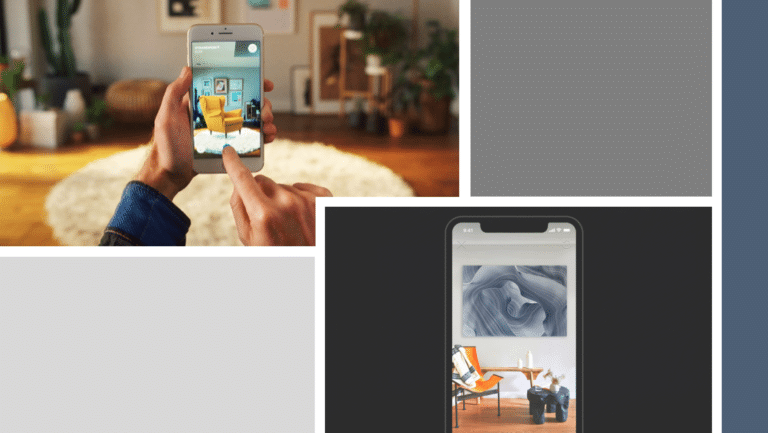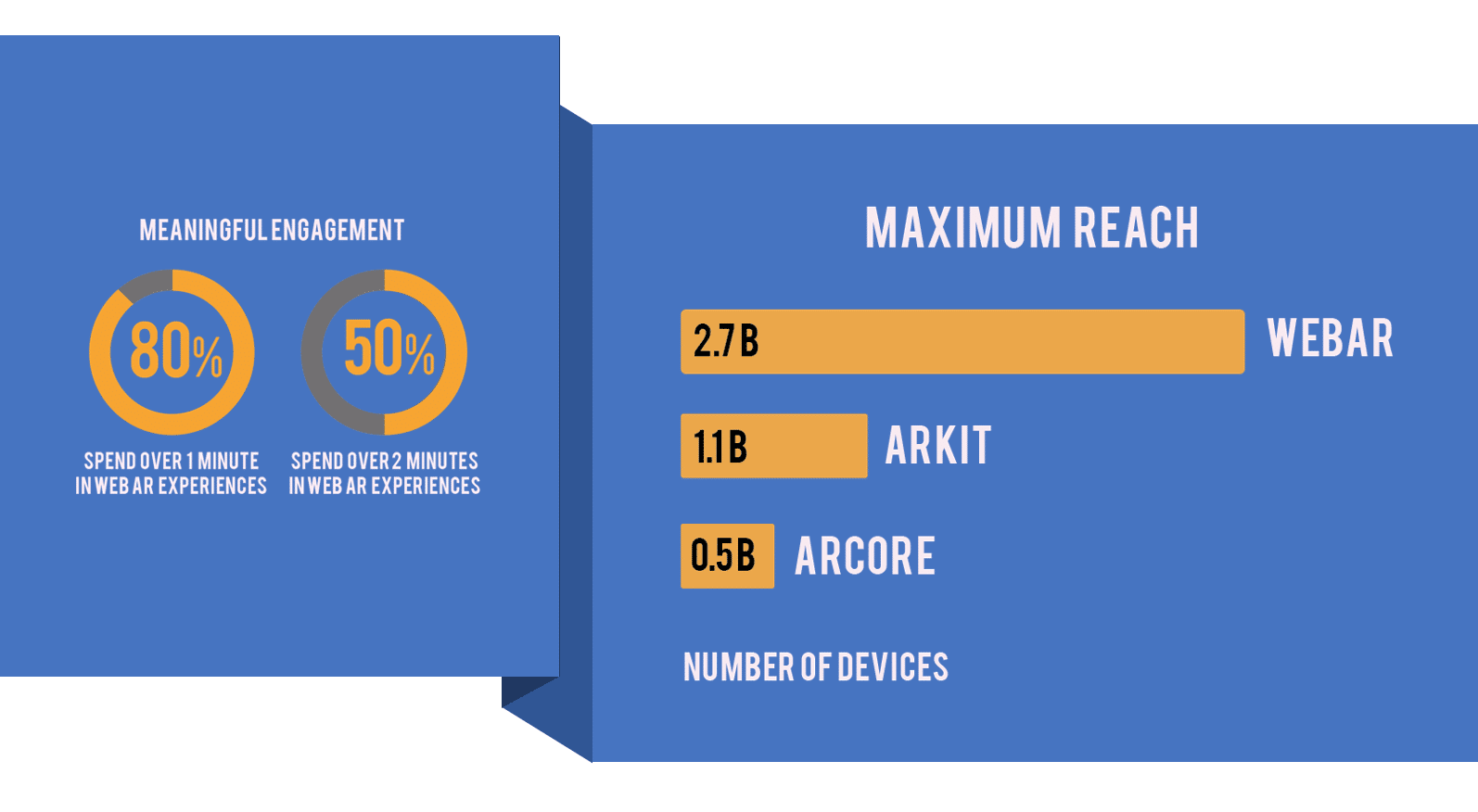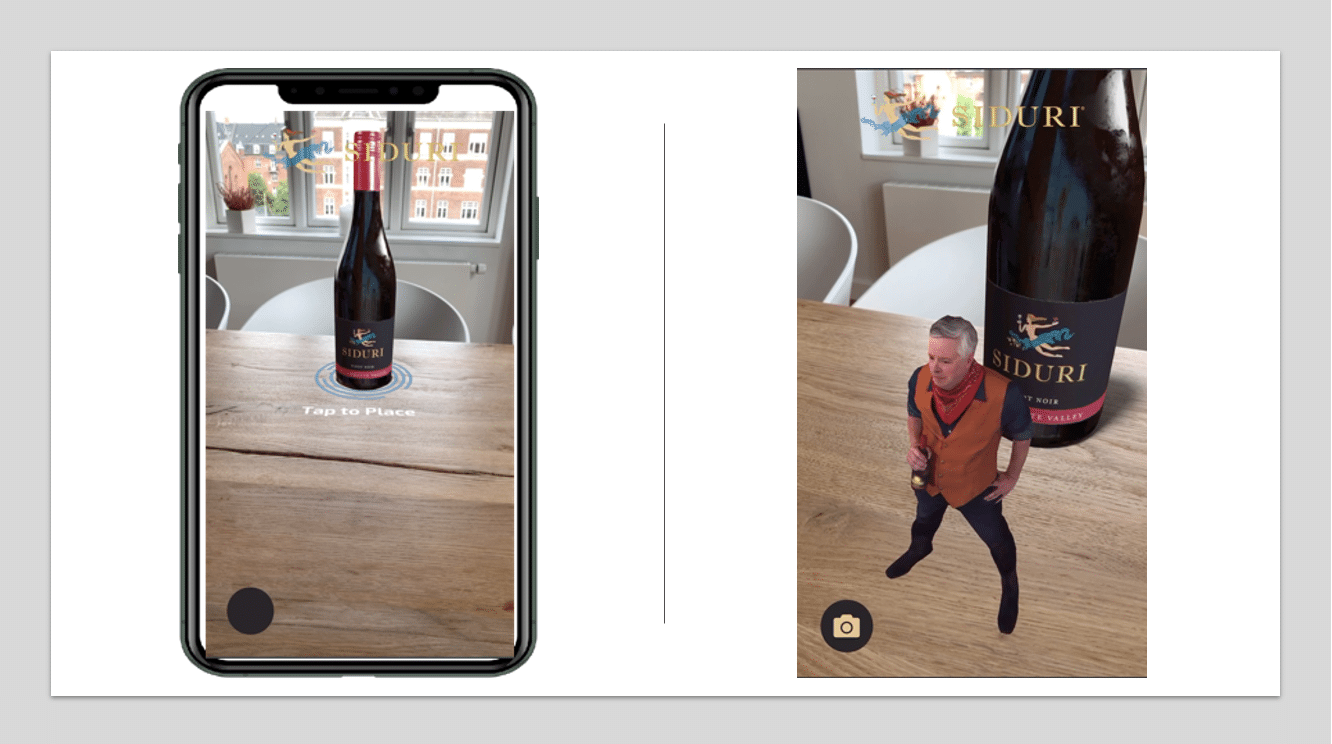
![]() “Vantage” is AR Insider’s editorial contributor program. It enlists spatial computing executives and innovators for first-hand strategic insights. Find out more or contact us to participate here. Authors’ opinions are their own.
“Vantage” is AR Insider’s editorial contributor program. It enlists spatial computing executives and innovators for first-hand strategic insights. Find out more or contact us to participate here. Authors’ opinions are their own.
Brands Boost Customer Engagement and Sales with Web AR (Part I)
by Patrick Johnson
Brand success doesn’t happen overnight and many of the brands we interact with on a daily basis go unnoticed. In today’s attention economy, brands are looking for any opportunity to stand out amongst the sea of digital content that floods consumer’s devices. And in a Covid-era social distancing landscape, consumer brands have to try even harder to connect with customers.
Brands pay a premium just to reach consumers, let alone engage them. Traditional advertising strategies that used to work now get lost in the noise. So how do brands make their message memorable and improve consumer perceptions?
This is where Web AR comes to the rescue – creating new ways for companies to reach and delight customers, drive brand engagement, and achieve measurable value.
In today’s attention economy, brands are looking for any opportunity to stand out amongst a sea of digital content. And in a Covid-era social distancing landscape, brands have to try even harder to connect. Share on XWhat is Web AR?
The greatest difference between Web AR and app-based AR is that Web AR is accessed through your phone’s mobile web browser rather than through an application. Like app-based AR, Web AR uses your phone’s camera to register computer-generated information and virtual experiences to the real-world.
However, where app-based AR requires the user to download and store an app on their phone (taking up time and space), Web AR is app-less, requires no downloads, and, therefore, no friction.
So why is this important? Web AR breaks down barriers to entry for users and dramatically improves engagement numbers. And, of course, with mobile-based Web AR, there’s no need for additional devices or expensive headsets to access 3D experiences — all a user needs is the smartphone in their pocket. With approximately 3.4 billion smartphone devices in the market today, that’s a broad pool of potential users.
Web AR breaks down barriers for users and dramatically improves engagement numbers. And with approximately 3.4 billion smartphone devices in the market today, that’s a broad pool of potential users. Share on XWeb AR is still in its infancy and has performance, computer vision (tracking), and activation limitations today. But it’s maturing rapidly and already showing appeal among major brands.
Using Web AR, brands can engage customers in-store using QR Codes to interact with a product, poster, flyer, receipt, or tag. Customers simply need to aim their phone’s camera on the QR Code to immediately access an AR experience in their real-world environment.
In fact, 60 percent of shoppers look up product information with their phones while in-store. With a customer that’s already used to pulling out their phone, it’s a small step to scan a QR code and start an AR experience.

An example of this experience in action Siduri Wines‘ AR experience — the world’s first holographic Web AR experience from a CPG brand. It was created in collaboration with Microsoft’s Mixed Reality Capture Studios technology, Rock Paper Reality (RPR) and 8th Wall’s Web AR platform.
Siduri Wines challenged us to create a hologram of their winemaker, Adam Lee. This required developing a way that their customers could engage with him without any need for an app across the consumer journey: from digital advertising and online promotion to in-store and at-home product activations.
So we worked with Microsoft’s Mixed Reality Capture Studio, using volumetric capture technology to create a hologram of Adam that users could access via on-bottle QR Codes or a web link. We then developed an AR experience fused with 3D content that amplified Siduri’s core messaging and brought holographic-Adam to homes and stores across the world. This boosted customer engagement, brand retention, and loyalty with the Siduri brand. See the experience in action here.

“This is a new frontier in authentic brand storytelling. RPR took our idea and brought it to life – figuratively and literally…” – David Bowman, Executive VP, Jackson Family Wines.
Why should I invest in this emerging technology?
With Web AR, brands can deploy any interactive AR experience for their target audience, across their preferred channels from social media to email. Within a few clicks, customers can interact with a brand in their physical world around them.
This is an inflection point for brands who, for the first time through Web AR, have an avenue to connect customers with lifelike 3D holographic performances of singers, celebrities, or athletes that endorse or represent their brand. They can place location-based Web AR holograms anywhere — on products, at bus stops, in stores, at events — as a way to excite customers and create positive and unforgettable brand associations.
This is an inflection point for brands who have an avenue through web AR to connect customers with lifelike 3D holographic singers, celebrities, or athletes that represent their brand. Share on XBenefits we hear regularly from clients include improving buyer confidence through 3D product engagement in the real world. Examples include “try before you buy” purchases that Ikea and Saatchi Art have executed. In fact, Saatchi Art last month announced the largest deployment of Web AR with RPR and 8th Wall, allowing consumers to view over one million works of art in their home before buying online.

“We know from customer surveys that over 70 percent of art buyers are hesitant to purchase because they can’t see the artwork in advance,” said Saatchi Art GM Jeanne Anderson. “By offering the ability to view an artwork via augmented reality on mobile, buyers will instantly see the beauty of the artwork in their home and will feel confident in their purchase. Since launching AR in its app in April 2018, the tool has been key in driving confidence for customers, as those who utilize the AR feature are “significantly more likely to purchase.”
We’ll pause there and pick it up in Part II of this series with more examples and best practices from brands deploying web AR to boost customer engagement and sales. Stay tuned for more…
 Patrick Johnson is Co- Founder of Rock Paper Reality.
Patrick Johnson is Co- Founder of Rock Paper Reality.





